Wondering what homeschooling in Singapore looks like in real life? We spoke to 4 mothers for a glimpse at how it works at preschool, primary and secondary school level.
Singaporean Mums Who Homeschool
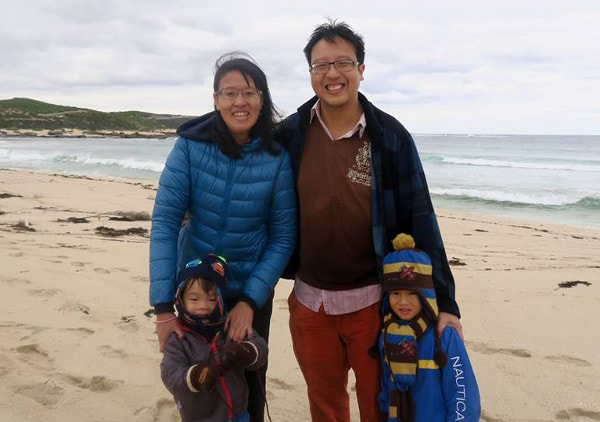 Image courtesy of Sue Tan
Image courtesy of Sue Tan
Sue Tan’s (pictured above) boys are aged 4 and 6. She started homeschooling when the oldest was 2.5 years old. She and her husband plan to homeschool through secondary level. They run a training company, The Social Factor, and Sensational Play Store, an online store retailing resources for learning and children with special needs. She works from home 2 to 3 days weekly, but plans to reduce her hours gradually as her eldest grows older and requires more attention for schooling. Read their parenting thoughts and journey at Parenting on Purpose
Jacqueline Lim has two kids, and homeschooled her 5 year old daughter for three years, while working part-time as a special education consultant. She plans to continue homeschooling through secondary school.
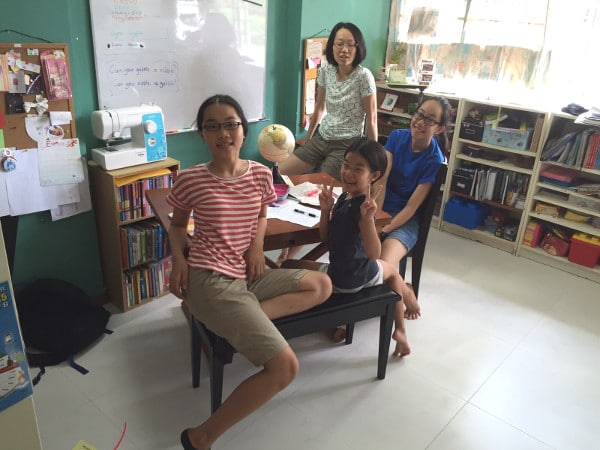 Image courtesy of Linda Khi
Image courtesy of Linda Khi
Linda Khi (pictured above in white and green top) homeschools three daughters, aged 16, 14, and 8. She’s flexible with her plans for how long she will homeschool. Her extroverted eldest is looking forward to junior college next year, while her second is hoping to continue homeschooling until university.
Hoon’s children are aged 18, 17, 15 and 12. She started exploring it when her third child was in preschool. When her eldest two were in P1 and P3, she pulled them out and began homeschooling in earnest.
What are your reasons for choosing to homeschool?
Sue: Education isn’t only about grades. We want to raise children with strong values, curious and passionate about what they’re learning, and who challenge themselves in areas that interest them. We want them to see the interconnectedness between the different disciplines. And we want them to experience all this within the context of the family.
Jacqueline: My husband and I hated school. We were bored, lost, and felt the teaching style didn’t cater to our learning needs. Mainstream education would stifle my child who is a creative type. Homeschooling provides me the flexibility to cater to her level and pace. Sitting down for hours doesn’t provide for effective learning. Learning happens better in short periods timed when motivation and interest peak.
What is your homeschooling timetable? What does a typical day, week or month look like?
Sue: On homeschool days, we start after breakfast with songs and movement activities, then maybe a story for that week before expansion activities like art, sensory play, exploring specific topics like planets or insects. We also have reading lessons and occasionally Chinese. When we’re tired or sick, I take it easy and do lots of calming activities like painting, build blocks, snuggling in bed, going for nature walks.
Jacqueline: Weekday mornings were formal learning times, after breakfast, songs and worship. Afternoons were a mix of house chores and free play. Much has changed with the pregnancy – now we spend most of our time reading and watching documentaries, with a few field trips when manageable. Some days we have co-ops in the morning.
Linda: Mornings are time for seat work, music practices, interspersed with breaks for storybooks or playtime. After lunch, it’s hands-on activities, co-ops, outings and more play. We homeschool year-round, except December and the 2-3 holidays we take a year.
What curriculums do you use?
Hoon: An eclectic approach, which includes unit studies, the Charlotte Mason method, SG syllabus for mathematics, and tutors for Chinese. I got a book on unit studies where you choose a topic and then everyone gets to read about the same topic, do an experiment, write about it. Younger ones talk or write shorter sentences, older ones write and research more.
Linda: Started off with Sonlight, a reading-oriented curriculum, switching to the MOE syllabus during each girl’s PSLE year. The teenaged girls’ curriculums are based on their interests like foreign languages, architecture and photography.
Sue: Before Five in a Row, a unit study-based curriculum for ages 3 to 5. They use high quality picture books from which they extend their learning to literacy, numeracy, geography, history, art, science and music. We’re about to begin Classical Conversations, a program which includes weekly sessions in a community of 9 children.
What do you love about homeschooling?
Hoon: More family bonding time, enhanced love among the siblings since they are playmates.
Jacqueline: I love the flexibility – to tailor our own goals for learning, to be able to add character building, Bible learning and life skills, on top of all the academic stuff.
Sue: Being able to avoid weekend crowds at places of interest, the opportunity to learn as we travel, memories of great books shared together which become part of what we experience in life, breadth and depth we can cover beyond the standard school curriculum.
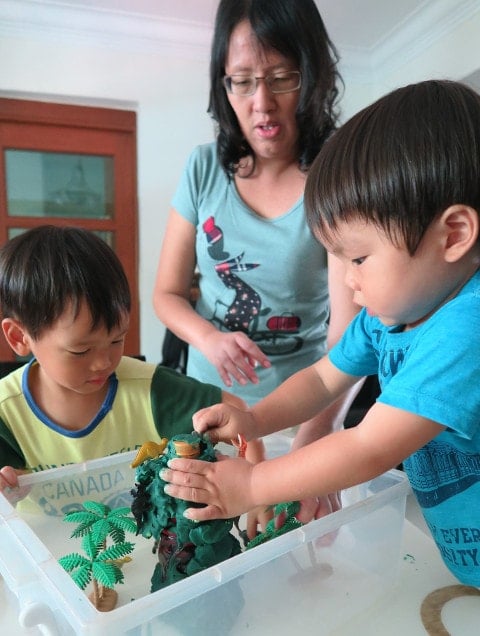 Sue’s two boys exploring with clay. Image courtesy of Sue Tan
Sue’s two boys exploring with clay. Image courtesy of Sue Tan
What are the challenges or downsides?
Hoon: Little “me” time for mom, having to submit yearly reports to MOE plus the new P4 assessment tests; family pressure to send them to school; smaller circle of friends for the children who are homeschooling as not many are good in sports.
Jacqueline: Facing your kid 24/7 – finding adequate amount of “down time” alone is tough.
Linda: I’m busy all the time! Organizing, planning, reading ahead, and it’s difficult to say ‘no’ to all the exciting activities and programs available within the homeschooling community and Singapore at large.
By Sara Rognstad.
Homeschool Series:
Part 1: Should You Homeschool In Singapore?
Part 2: Homeschooling In Singapore
Part 3: Is Homeschooling For You And Your Child?
Part 4: The Pros And Cons Of Homeschooling
Part 5: Resources For Homeschool Parents
Part 6: Useful Tips For The New Homeschooling Mum
Part 7: Methods Of Homeschooling
Part 8: Why Do Parents Homeschool
Part 10: Important Homeschooling Principles To Note
Part 11: How to Apply For MOE Approval
* * * * *
Like what you see here? Get parenting tips and stories straight to your inbox! Join our mailing list here.
Want to be heard 👂 and seen 👀 by over 100,000 parents in Singapore? We can help! Leave your contact here and we’ll be in touch.






































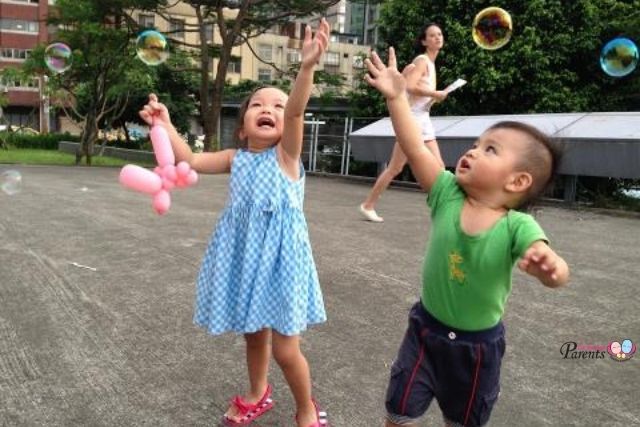
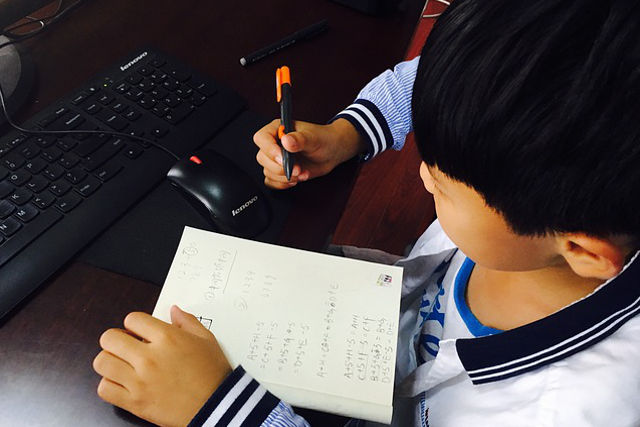
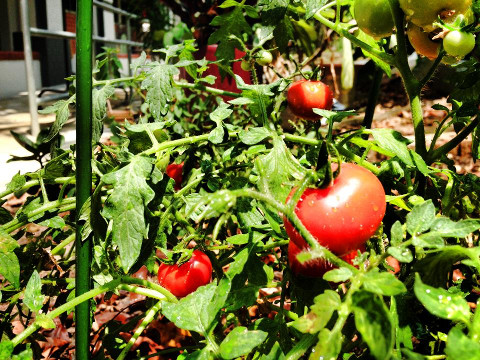

















Leave a Comment: